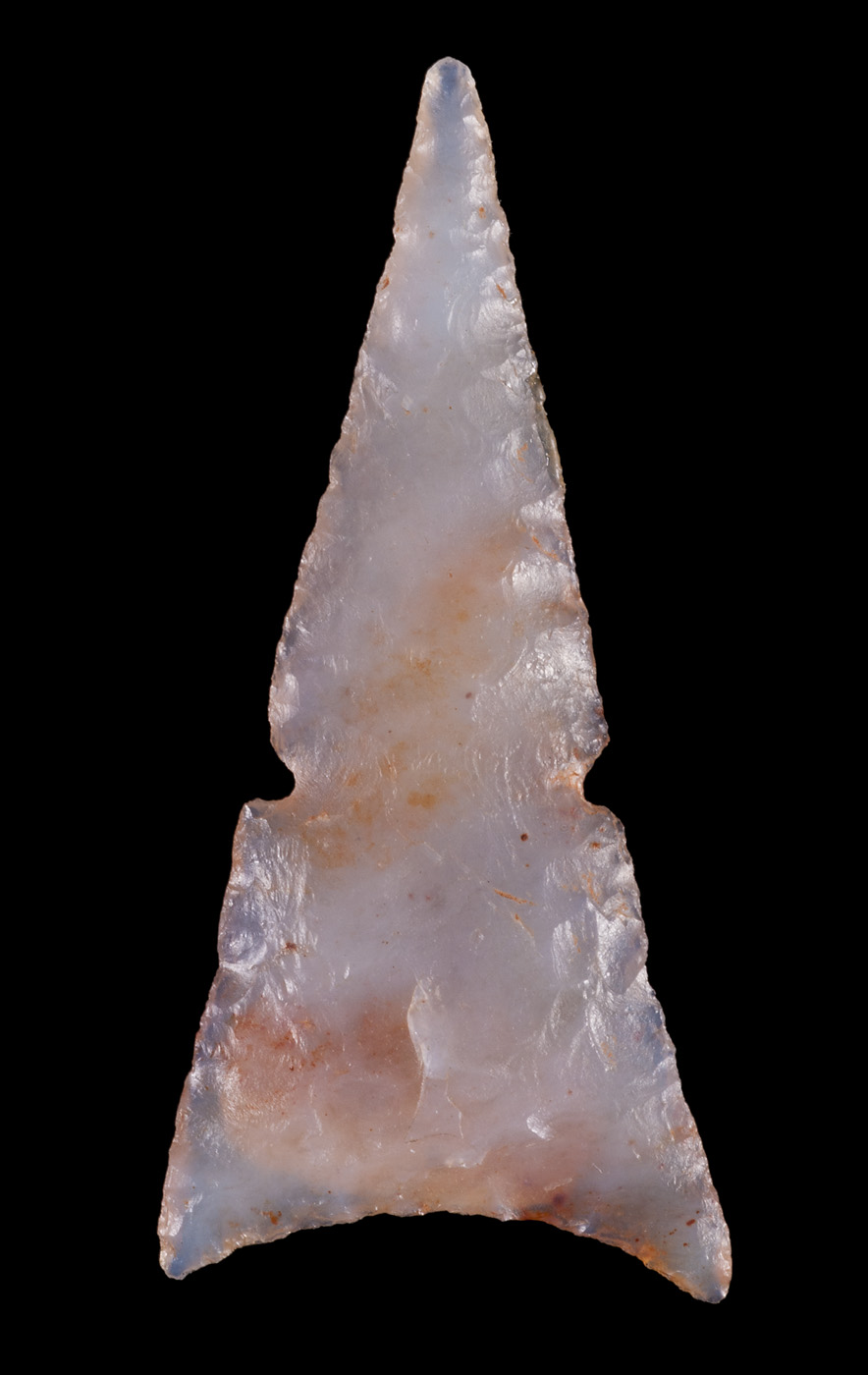
Ridge Ruin Side-notched point, Wupatki National Monument. Click the image to open the Pueblo Side-notched, Concave Base gallery.
Archaeological Culture: Ancestral Puebloan, Sinagua
Geographical Range: Most of Arizona and New Mexico, south into northern Mexico, and into southeastern Utah and southwestern Colorado.
Date Range: A.D. 1050 – 1300/1500 (Justice 2002; Sliva 1997).
Size: Generally less than 30 mm long.
Shape: Isosceles triangle; straight blade margins; side-notched; delicate tips.
Cross-section: Flat to flattened oval.
Base: Straight to concave; sharp corners.
Flaking: Pressure; random. Thin flake blanks used as preforms, so some areas may not be flaked.
Notching: Small, narrow, and horizontally placed (except for the Ridge Ruin variety, which has downward slanting notches); sharp angles.
Materials: Chert, obsidian, and chalcedony.
Varieties:
- Ridge Ruin Side-notched – high-set notches set at a downward angle; with the exception of Walnut Canyon Side Notched, larger than others in this point class; A.D. 1150-1220/1300.
- Walnut Canyon Side-notched – similar in size to Ridge Ruin Side Notched, but with a deep concave to V-shaped base, occasional constricting basal ears, and horizontally placed notches.
- Point of Pines Side-notched – thin and delicate, with very high-set side notches and quality flaking; A.D. 1150-1300.
Other Names: Classic Side-notched; Early Classic Side-notched.
Comparisons: Desert Side-notched points are similar; although Justice (2002) includes Awatovi Side-notched in the broad Pueblo Side-notched category, these are morphologically and temporally akin to the Sierra variety of Desert Side-notched points; both are distinguished from other Late Prehistoric side-notched points by the presence of a basal notch.
Compiled from the following sources:
Justice, Noel D. (2002) Stone Age Spear and Arrow Points of the Southwestern United States. Indiana University Press, Bloomington.
Sliva R. Jane. (1997) An Introduction to the Study and Analysis of Flaked Stone Artifacts and Lithic Technology. Center for Desert Archaeology, Tucson.
Sliva, R. Jane. (2006) Projectile Points in Regional Perspective. In Sunset Crater Archaeology: The History of a Volcanic Landscape – Stone, Shell, Bone, and Mortuary Analyses, edited by M. D. Elson, pp 31-64. Anthropological Paper No. 31, Center for Desert Archaeology, Tucson.
Compiled by:
Meghann M. Vance, Northern Arizona University Anthropology Laboratories
